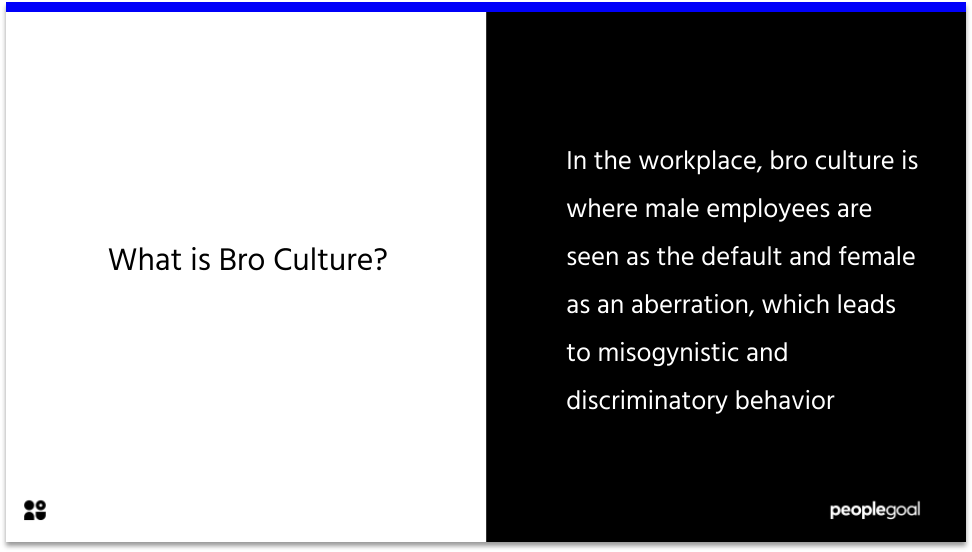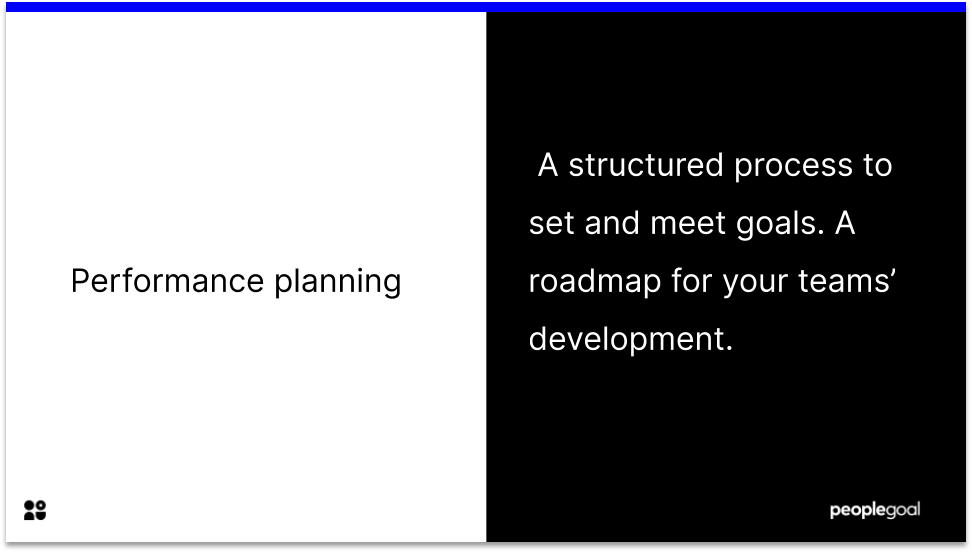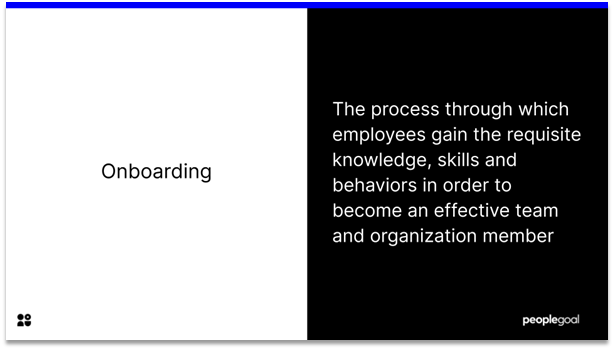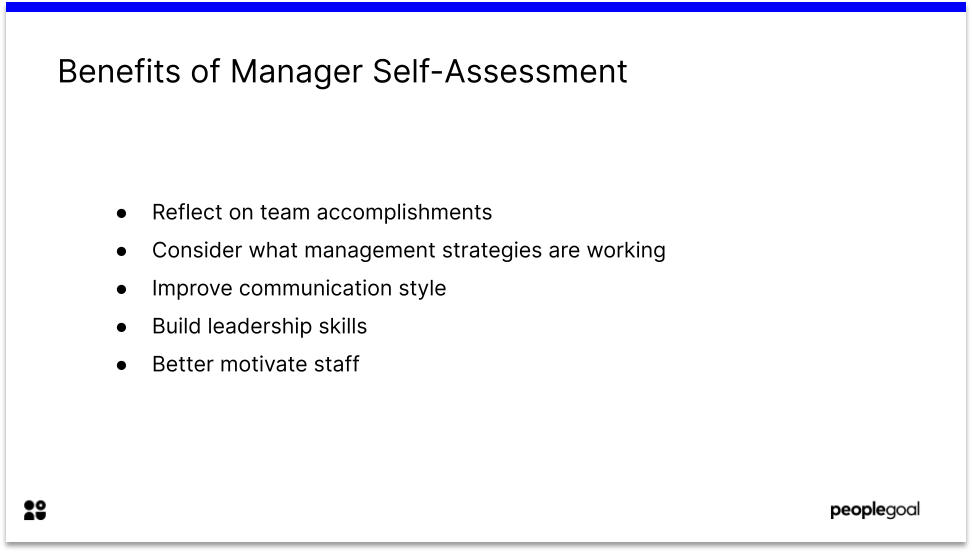It’s almost that time of year again – the performance review cycle. But performance reviews are not always cause for celebration. HR teams often struggle to complete performance review cycles within a defined timeframe.
If performance reviews are put on the back-burner, development efforts are hampered. Employee relations are strained – as employees aren’t getting the ongoing and formal feedback they need.
What is behind the fall in performance review completion rates? Reviews require manager buy-in. It’s managers who are often responsible for the heavy-lifting.
In an article for People & Strategy, a Deloitte manager called the review process ‘an investment of 1.8 million hours across the firm that didn’t fit our business needs anymore’. Managers often face the unwieldy task of gathering examples of their teams’ work for annual performance reviews.
Weak buy-in from managers is a major reason for the shift away from traditional appraisals in a third of companies. However, consistent and timely performance reviews still have their role to play.
We’ll explore how to provide managers and employees with the training to fully engage with the performance review process. We’ll also consider how to improve your performance management system for an 100% completion rate.
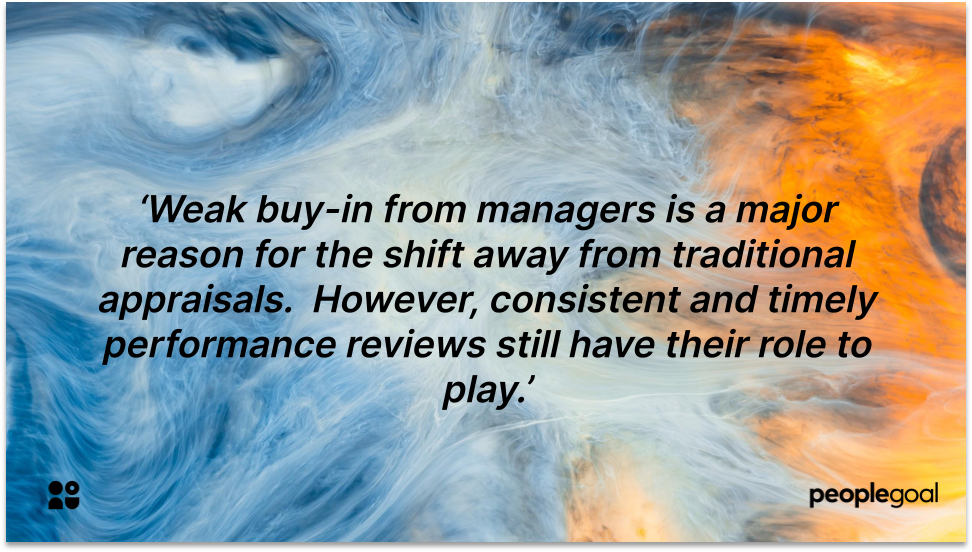
1. Train employees and managers on the process
Managers and employees need training on the process so they can engage fully. If you’re using an online process, this might involve a webinar in which HR explains the system.
Try to train employees and managers team by team. This leads them to hold each other accountable.
Schedule a meeting with managers to set out priorities for the review process. What do they want their appraisals to achieve? Is their approach development-focused?
Then run them through how the system will work. Consider how to incorporate their aims.
2. Run the performance review process online
Many human resources teams faced difficulties undertaking the appraisal process remotely this year.
Online reviews have myriad benefits. First, they eliminate the paper burden, making performance reviews less time-consuming.
Performance reviews are complex. Employees interact with different teams. They seek feedback from peers as well as managers. Companies are increasingly adopting 360 Feedback, which involves multiple parties.
This cross-collaboration makes performance evaluations less hierarchical. Online reviews offer better insights into performance without complicating the process.
Online reviews are also a great way to track progress. Many performance review systems enable you to set status flags and reminders.
Benefits of an online performance review process
- Cross-collaboration
- Track progress and schedule one-on-ones
- Automate key steps to ensure managers and employees follow HR’s review strategy
- Great for remote teams
- Automate performance review analytics
- Streamline review workflow
- Set goals for future reviews

3. Set review cycles, deadlines and nudges
Make room in the schedule for each stage of your review. Consider having themed weeks. For example – week 1 might be the Self-Evaluation Week, and the final week, say, week 5, might be One-on-ones week. Break it down so it doesn’t become an overnight panic!
Publicise the schedule on internal social media, Notion or your company’s communication channel. Set reminders – including for relevant meetings- so that no-one is left out of the loop.
Making deadlines clear and manageable boosts participation rates.
4. Hold managers accountable for completion
A great way to hold managers accountable is to schedule a reflection meeting for reviews. Include executive board members at the meeting to improve oversight.
A more drastic measure is to withhold manager bonuses until they complete their reviews.
However, prevention is better than cure. Think about how you can educate managers and employees on the benefits of the review process.
Emphasize the centrality of feedback to employee engagement. 68% of employees who receive accurate and consistent feedback feel fulfilled in their jobs.
Any manager who wants to see improvements in employee performance and engagement needs to invest their time in this area.
Ways to hold managers accountable for completion
- Ensure deadlines are realistic in relation to their other projects
- Check-in to ask how the review process is going
- Educate employees on the review process and remind them to inform HR of any issues
- Ensure managers are part of the internal communications on performance reviews, so it isn’t viewed as an HR outpost

5. Coach managers up for review success
Managers are not always HR specialists. The review process can be overwhelming, especially when team members are underperforming.
Review coaching can go a long way. You may want to address issues with performance review ratings. Offering context to the parameters ‘Room for Improvement’ or ‘Excellent’ helps managers make more informed decisions. Ratings are less likely to appear arbitrary.
Consider coaching managers for performance appraisal conversations. Worries about causing offense or alienating employees can cause managers to procrastinate.
Constructive feedback training can challenge this. Forbes writer recommends using the acronym T.H.I.N.K. when giving feedback:
T = Is it true?
H = Is it helpful?
I = Is it inspiring?
N = Is it necessary?
K = Is it kind?
This helps managers to stay reflective as they offer constructive feedback. Techniques like this one make feedback conversations productive and reassuring.
By improving feedback conversations, you start creating a culture in which the review process works for your people.
Tips for Improving Feedback Conversations
- Evidence all assertions with examples
- Explain each point of feedback, and then allow space for the employee to respond
- Be open to challenge on feedback – managers do overlook some aspects of performance
- Active listening
- Come prepared

Improving Performance Review Completion Rates – Key Takeaways
Establishing a simple but effective performance review process is a must for HR teams. Define ownership at every step, from Self-Evaluations, through Manager Appraisals to One-on-Ones. Every employee should be aware of their role.
Move from paper-based to online performance reviews to create cross-collaboration. Proven review methods, such as ongoing feedback or 360 feedback, work best online. You can keep track of employee information, one-on-ones and involve multiple parties.
For any company with low performance review completion rates, training is essential. Coach managers on how to give objective feedback and prepare them for review success.
PeopleGoal’s Reviews for Multiple Managers app is available in our App Store. To find out how you can create customizable and relevant reviews, book a demo.
Ready to 3x Your Teams' Performance?
Use the best performance management software to align goals, track progress, and boost employee engagement.

